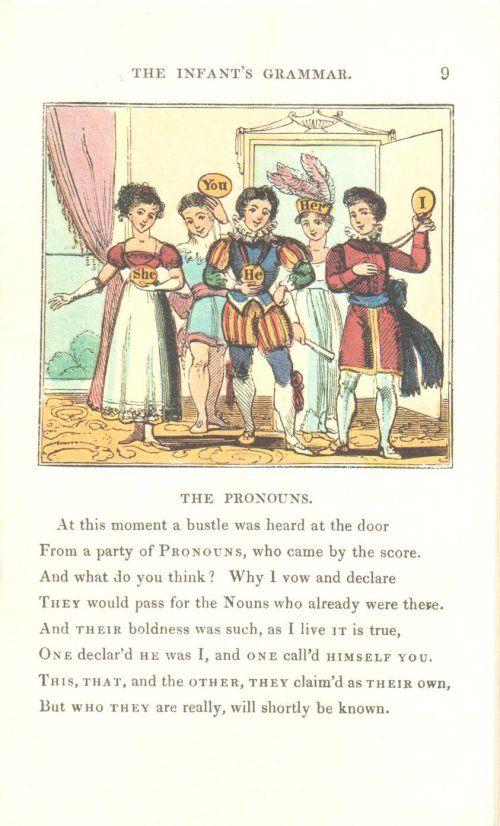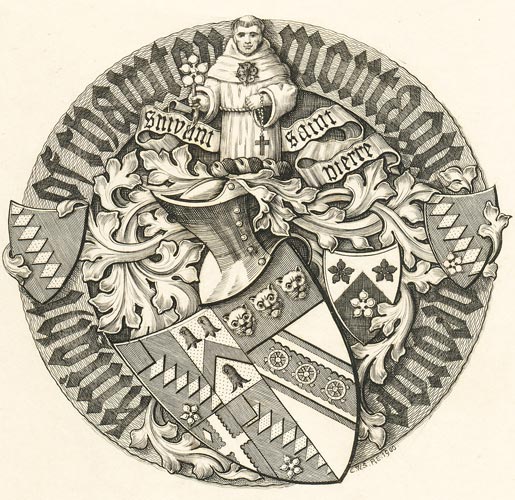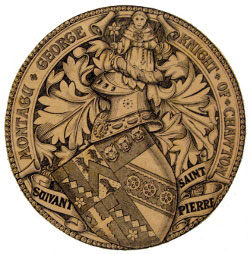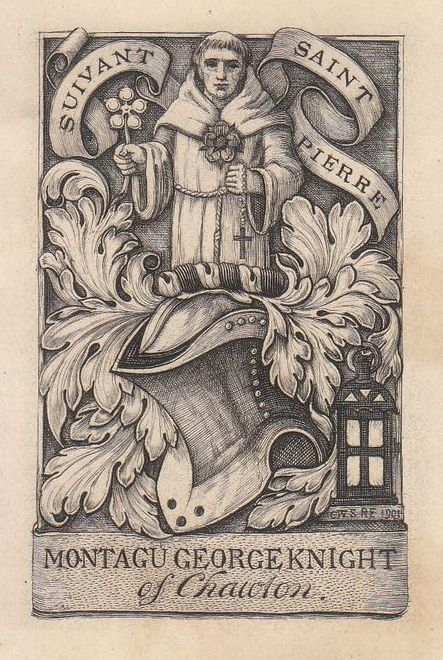
The JASNA AGM in Montreal was quite wonderful – five days immersed in Mansfield Park! – Fanny Price and Jane Austen were celebrated in style and received their just due in attention and adoration… The Montreal-Quebec Region outdid themselves in making us all comfortable [much more than “tolerable”!], entertained, and enlightened! I haven’t had a chance to post anything but start here with my annual compilation of book purchases at the Emporium [Jane Austen Books, Traveller’s Tales from Picton Ontario, and The Word Bookstore in Montreal] – successful as always with finding several goodies at the book stalls! – in no particular order…
1. Mudrick, Marvin. Jane Austen: Irony as Defense and Discovery. Berkeley: U of California P, 1968. [originally published in 1952 by Princeton UP].
One of the classic works of Austen literary criticism – I’ve always borrowed this from the library – now happy to have my own copy. Mudrick was one of the earliest to appraise the ironic aspects of Jane Austen – “her ironic detachment that enabled her to expose and dissect, in novels that are masterpieces of comic wit and brilliant satire, the follies and delusions of eighteenth-century English society.” In his preface, Mudrick writes “this book began as an essay to document my conviction that Emma is a novel admired, even consecrated, for qualities which it in fact subverts or ignores.” – and he goes on from there to apply his theory to all the novels, juvenilia and minor works. A must have for your Austen collection…
 2. Mrs. Beeton’s Book of Needlework, Consisting of Descriptions and Instructions, Illustrated by 600 Engravings. London: Bounty Books, 2007.
2. Mrs. Beeton’s Book of Needlework, Consisting of Descriptions and Instructions, Illustrated by 600 Engravings. London: Bounty Books, 2007.
A facsimile of the original 1870 edition by Ward, Lock and Tyler. Just because I didn’t have this, and do quite adore anything my dear Mrs. Beeton [despite being in the wrong period].
- 3. Fleishman, Avrom. A Reading of Mansfield Park: An Essay in Critical Synthesis. Minneapolis: U of Minnesota P, 1967.
One of the few critical works just on an Austen novel, and in this year of celebrating MP, I wanted to add this to my collection… I have not read it other than in excerpts in other essays.
4. Favret, Mary A. Romantic Correspondence: Women, Politics and the Fiction of Letters. Cambridge: Cambridge UP, 1993.
Has a chapter “Jane Austen and the Look of Letters” which examines the letters in Austen’s fiction as well as her real-life correspondence. A must-have…
5. Lamb, Charles. The Book of the Ranks and Dignities of British Society. London Jonathan Cape, 1924.

A reprint of Lamb’s 1805 edition published by William Henry for Tabart & Co. Includes 8 coloured plates and 16 in monochrome [the original edition has 24 in color]. I couldn’t resist, as you can see from this plate of “A Marquis.” The original seems to range upwards from $350.
*********
6. Tristram, W. Outram. Coaching Days and Coaching Ways. Illus. Hugh Thomson and Herbert Railton. London: Macmillan, 1894.

A 3rd printing of the 2nd edition [first edition published in 1888] – another must-have for anyone with an interest in travel and the carriages of Austen’s period – with the added plus of Thomson’s and Railton’s 214 illustrations. [You also must try to say the author’s name 10 times very fast …]
7. Waldram, Richard. Overton in Regency Times. Illus. Rosemary Trollope. Overton, Hampshire: Parsonage Farmhouse, 2008.

From an exhibition during the Overton Regency Sheep Fair, 2008. With many illustrations of ephemera from the time. Overton was near Steventon and Basingstoke; Austen would have walked there and mentions it in her letters.
8. The Knight Family Cookbook; Preface by Richard Knight. Introd. Gillian Dow. Chawton House Press, 2013. 
A Facsimile edition of the handwritten cookbook of the Knight Family, never published but dated circa 1793. Who can resist this family treasure so you too can make some of the recipes that were in use at Chawton House and Godmersham Park during Jane Austen’s time:
- To Make Plumb Porridge (p. 70)
- To Make Cracknails (p. 51)
- To Make Hedge-Hog-Cream (p. 35)
- To Make Tansy without Frying (p. 28)
- To dress a Codds-Head (p. 111)
- To Pickle Pigeons (p. 193)
There is even a handwritten index, but alas! I find nothing to help make Mr. Woodhouse’s famous gruel – just as well I think!
This book was published by subscription; i.e. if you had made a donation to Chawton House Library as a subscriber (just as Jane Austen subscribed to Frances Burney’s Cecilia), your name will be listed on the “subscriber” page. More information on this at the CHL website. Their next book is The Duties of a Lady’s Maid; with directions for conduct, and numerous receipts for the toilette (1825). Make a donation if you can and see your name in print!
9. Simo, Melanie Louise. Loudon and the Landscape: From County Seat to Metropolis, 1783-1843. New Haven: Yale UP, 1988. 
John Claudius Loudon (1783-1843) was the designer of England’s first public park and inventor of the means to construct curvilinear glasshouses, and the first landscape gardener to address the problems of the modern city. A must-have study to have on your shelves next to your Humphry Repton, Capability Brown, and others. Illustrated with maps, photographs, and drawings.
10. Prochaska, Alice and Frank Prochaska, eds. Margaretta Acworth’s Georgian Cookery Book. London: Pavilion / Michael Joseph, 1987.
The cookery book of a London housewife of the Georgian period, of which 90 recipes are transcribed and “updated” with modern ingredients and modern cooking practices by the Prochaskas. Lovely black and white and full-page color illustrations. The introduction offers biographical background on Acworth.
11. Lucas, E. V. Mr. Punch’s County Songs. Illus. Ernest H. Shepard. London: Methuen, 1928.
A delightful book of poems by Lucas on each county in England with each on the recto, verso is blank. Shepard’s [of Winnie-the-Pooh fame] drawings get you into the spirit of each place, and the poems tell of history and story.

Here is the page on Austen’s own Hampshire
But I bought this solely for its page on London:
Though a Wren built St. Paul’s, sacerdotal and grey,
That fame is a stronghold of pigeons today:
They bill there and coo there and bring up their brood,
And swarm on the pavement at lunchtime for food.
…. Etc.
**********
12. Archbold, Rick. Last Dinner on the Titanic. Recipes by Dana McCauley. Introd. Walter Lord. New York: Hyperion, 1997.
Wonderful illustrations of the Titanic interior and the various recipes from the last meal. Why you ask? Well, I have been obsessed with the Titanic since I was a little girl. Both my parents emigrated from England as children, but my father was 11 years old in 1912, when his entire family boarded a ship to take them to America only a few months after the Titanic had taken its maiden and tragic voyage. I always thought that if my father had been on the Titanic I would not exist – I also have marveled at how brave they all were to do this crossing… so hence I have collected various Titanic things for years. I do not have this book and especially like it because it is signed by the author…
13. The Infant’s Grammar, or a Picnic Party of the Parts of Speech. London: Scholar Press, 1977. Reprint of the original 1824 edition by Harris and Son.
This picture says it all:

*******
14. Rocque’s Map of Georgian London, 1746. Colchester, Essex, UK: Old House, 2013.
Nothing to say except that this is fabulous: here is the description from their website: http://www.shirebooks.co.uk/old_house_books/

First published in 1746, it extends from Marylebone to Bow and from Vauxhall to Knightsbridge and Hyde Park. Reproduced here in four detailed sheets, it gives a fascinating glimpse of Georgian London in the early industrial age and is a perfect research tool for the historian and genealogist. As well as over 5,500 street and place names, the survey also includes: Markets, churches, barracks, parks, bridges, hospitals, workhouses, schools, prisons, asylums, theatres, inns and much more.
*********
15. Crow, Donna Fletcher. A Jane Austen Encounter (#3 The Elizabeth and Richard Mysteries). Boise: StoneHouse Ink, 2013.
I haven’t read the previous two mysteries (about Dorothy L. Sayers and Shakespeare), but this one is about the married professors Elizabeth and Richard on a vacation trekking through Jane Austen country – they encounter murder and mayhem and a missing letter about The Watsons. Can’t wait to read this one…
16. Jones, Will. How to Read Houses: A Crash Course in Domestic Architecture. New York: Rizzoli, 2014.
I picked this up at the Musee des Beaux-Arts Montreal shop – a compact little guide to architecture with photographs and drawings and enlightening text to answer all your questions about the differences between Queen Ann and Georgian and Federal and all the various decorations…

17. First Day of Issue – Royal Mint coin commemorating Charles and Diana’s wedding with stamps; and another First Day of Issue from the Falkland Islands with new stamps:

–

***********
So, all in all, a goodly haul – this time I didn’t have to worry about luggage weight, only crossing through immigration from Canada into Vermont. They only seem to ask about alcohol, cigarettes and fruit! so Jane Austen passed through with nary a glitch… now to find room on the bookshelves and the added dilemma of time for reading…
What did you buy at the AGM??
c2014 Jane Austen in Vermont









































 [CHL book with bookplate and shelf ticket]
[CHL book with bookplate and shelf ticket]









 4. Susannah Fullerton, Amanda Jones, and Joanna Penglase, ed. Georgette Heyer: Complete to a Shade: A Celebration. JASA, 2016.
4. Susannah Fullerton, Amanda Jones, and Joanna Penglase, ed. Georgette Heyer: Complete to a Shade: A Celebration. JASA, 2016.








































